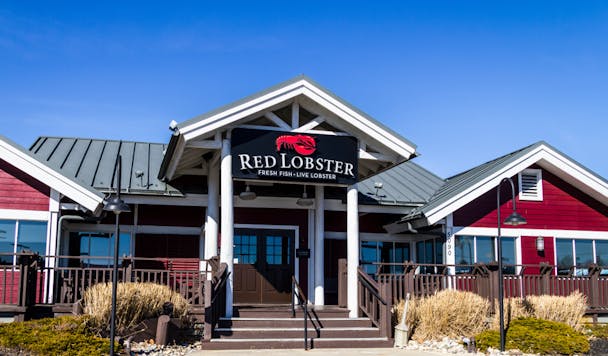Is Red Lobster dead in the water – or could it be a fresh catch for a hungry investor?
The popular US seafood chain is sinking in the wake of strategic missteps and economic pressures. However, experts see a chance to reel in success with innovative rebranding and strategic management.

Branding experts discuss the combination of factors that led to Red Lobster's bankruptcy. / Credit: Adobe Stock
Just days after closing 50 locations across the United States, Red Lobster, the largest seafood restaurant brand, has filed bankruptcy, citing over $1bn in debt. The company had reportedly attempted to restructure its debt earlier this year.
Fans of the casual restaurant chain are taking to social media to express their utter disbelief.
https://t.co/7KDgjQOFqb pic.twitter.com/1LIPZ7masq
— IVProduced.eth (@_IAmInvictus) May 20, 2024
The news comes just a month after the company launched ‘Cheddar Bay-I,’ its first-ever ad campaign, which used AI to create 30 songs inspired by its iconic Cheddar Bay Biscuits.
Could Red Lobster have avoided its crash? Experts say a variety of factors are to blame for the restaurant chain’s decline – but some see potential paths to recovery ahead.
Economic pressures & strategic blunders to blame
Both macroeconomic challenges and poor strategic decisions on the company’s part seemed to exacerbate Red Lobster’s financial troubles.
Ryan McCormick, co-founder and media relations specialist at Goldman McCormick Public Relations, points to high inflation in the market and a poorly executed promotion as the two main contributors to the chain’s current woes. “Food price increases are forcing many to seek alternative, less expensive options,” he says.
Red Lobster’s ‘Ultimate Endless Shrimp’ promotion, according to McCormick, intended to draw in more customers, yet backfired spectacularly, costing the company $11m in losses in a single quarter.
Arjan Singh, business strategist and adjunct professor at Southern Methodist University, agrees with the assessment. “It seems Red Lobster grossly underestimated the amount of food Americans are capable of consuming in a single setting with their ‘Ultimate Endless Shrimp’ campaign,” he says, adding that climbing minimum wages and high costs for raw materials likely worsened the company’s financial circumstances.
In addition to marketing promotions gone awry, poor pricing tactics are also to blame in experts’ evaluation of the root problem.
Kevin Hart, chief sales officer at Upside, a cash-back platform that works with retailers and restaurants across the US, underscores the inherent risks in Red Lobster’s discounting strategy. “Unnecessarily discounting items for diners who would have visited without the perk is bad for business,” he says.
The chain’s reliance on value menus and promotions failed to drive incremental traffic and instead cannibalized profits from existing customers, according to Hart. This approach, while intended to provide value, ultimately weakened the brand’s financial position.
To compound the company’s tenuous position, it failed to adapt to changing consumer tastes, thereby sacrificing brand relevancy, suggests Stefanie Magness, founder and publicist at Elevate U PR. “Red Lobster missed the boat by not hooking on to the trend of offering more diverse, sustainable seafood options,” she notes, adding that the brand’s outdated image and lack of innovation failed to resonate with younger, health-conscious diners.
What’s next: a rebrand or a fresh catch for a hungry investor?
The future of Red Lobster in the US remains uncertain, but some degree of cautious optimism prevails among marketers and PR professionals.
Experts say a strong recovery will require innovative rebranding, financial restructuring and a deeper understanding of contemporary consumer dining preferences.
McCormick predicts that Red Lobster will survive, albeit with fewer locations, which could potentially increase public demand. He also suggests that a ’Save Red Lobster’ crowdfunding campaign could rally the brand’s passionate fanbase and help garner support while giving it a financial boost.
Meanwhile, Magness envisions a rebrand that could position Red Lobster as a modern, sustainable seafood destination. “Imagine a seafood shack that’s not just about the catch of the day but also the experience,” she says.
Southern Methodist University’s Singh, however, believes it will take more than consumer support and strategic repositioning. He says that the company’s survival will hinge on a buyer who can inject significant operating capital into it.
The right buyer could engineer a turnaround by reducing costs or even transform the brand into a “strategic add” for larger portfolio companies looking to add a seafood restaurant to its lineup.
For more, sign up for The Drum’s daily newsletter here.

